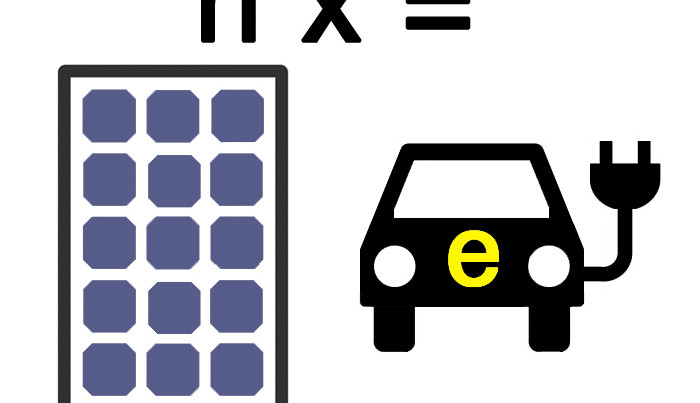E-vehicle self-sufficiency -- how many PV panels would you need?
April 02, 2019
on
on

Have you ever thought just how many solar panels you would need to strap to your roof to make sure all the energy needed for your e-vehicle comes entirely from our nearest star? This situation would surely be fairly close to ecological nirvana. We got out the slide rule and made a few quick calculations...
A typical commercially available PV panel can supply 250 Wp and occupies 1.6 m² surface area. In central Europe it will typically supply about 220 kWh per year making 600 Wh per day on average. Then the Tesla would need a total of 167 solar panels which works out over 270 m² of roof area. I guess if you can afford a top-end Tesla you have probably also got the roof area available… During winter months reduced sunlight will mean that the battery only gets half a charge.
The e.GO Life uses a 14.5 kWh battery so you will need at least 24 panels covering an area of around 40 m². This is just about feasible and corresponds to an average (large) domestic PV installation with 6 kWp capacity which is also reasonably affordable on an average family income. This would only then be practicable if the mains grid is considered an energy storage facility where the PV generator supplies excess energy to the grid in summer and energy is withdrawn during the winter to charge the vehicle.
That works out that the Tesla driver would need only about 24 panels rated at 250 Wp taking up a roof area of about 40 m². The same area would give the e.go driver a full charge. The system should also be designed to provide enough power during winter and cloudy periods (about a factor o592.5).
The e.GO Life would need 15 panels covering an area of 24 m². A domestic PV system supplying just less than 4 kWp to sustain a small electric car’s energy needs is just about feasible. An installation of this size is compatible with the roof area of an average house and comes in below the 10 kWp threshold which in Europe is subject to different regulations.
These rule of thumb calculations will of course only apply if the vehicle is available during the day for charging. If it’s not at home to recharge during daylight, you would need a buffer battery of appropriate capacity, which would increase costs massively. This also does not factor the CO2 savings of a PV system into the ecological equation.
Battery capacity and PV panels
First, you need to know a few technical details about the vehicle. The largest Tesla uses a 100 kWh battery whereas the snug 4-seater Emobil from e.GO has less than 15 kWh. Do you plan to replenish the power in the course of one day?A typical commercially available PV panel can supply 250 Wp and occupies 1.6 m² surface area. In central Europe it will typically supply about 220 kWh per year making 600 Wh per day on average. Then the Tesla would need a total of 167 solar panels which works out over 270 m² of roof area. I guess if you can afford a top-end Tesla you have probably also got the roof area available… During winter months reduced sunlight will mean that the battery only gets half a charge.
The e.GO Life uses a 14.5 kWh battery so you will need at least 24 panels covering an area of around 40 m². This is just about feasible and corresponds to an average (large) domestic PV installation with 6 kWp capacity which is also reasonably affordable on an average family income. This would only then be practicable if the mains grid is considered an energy storage facility where the PV generator supplies excess energy to the grid in summer and energy is withdrawn during the winter to charge the vehicle.
Distance covered and panels
A more realistic approach to estimate the necessary number of panels would be to take into account the average daily distance travelled. Assuming average distance of just under 40 miles/d, a Tesla would consume approximately 14 kWh/d while the e.GO Life would use 9 kWh/d, sooo — not such a huge difference!That works out that the Tesla driver would need only about 24 panels rated at 250 Wp taking up a roof area of about 40 m². The same area would give the e.go driver a full charge. The system should also be designed to provide enough power during winter and cloudy periods (about a factor o592.5).
The e.GO Life would need 15 panels covering an area of 24 m². A domestic PV system supplying just less than 4 kWp to sustain a small electric car’s energy needs is just about feasible. An installation of this size is compatible with the roof area of an average house and comes in below the 10 kWp threshold which in Europe is subject to different regulations.
These rule of thumb calculations will of course only apply if the vehicle is available during the day for charging. If it’s not at home to recharge during daylight, you would need a buffer battery of appropriate capacity, which would increase costs massively. This also does not factor the CO2 savings of a PV system into the ecological equation.
Read full article
Hide full article


Discussion (5 comments)